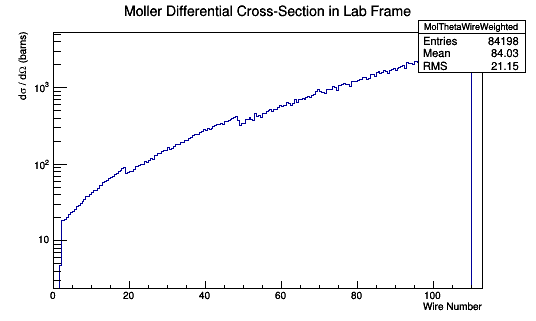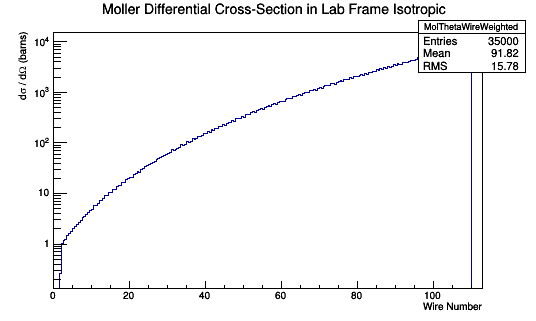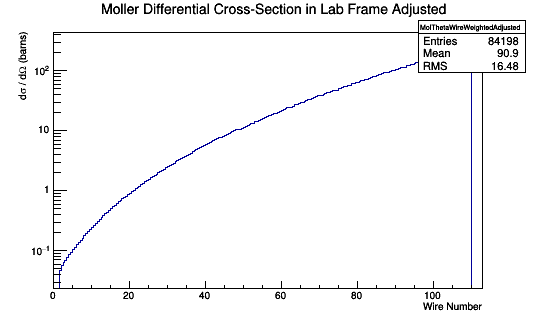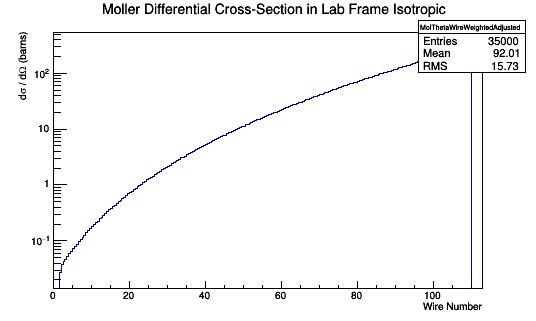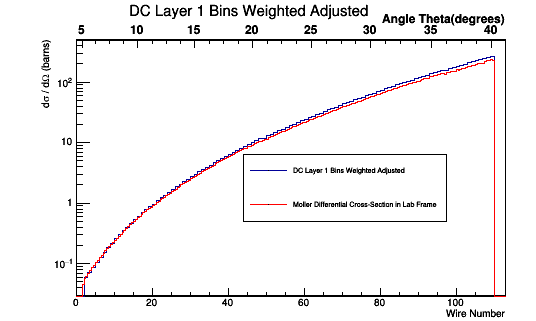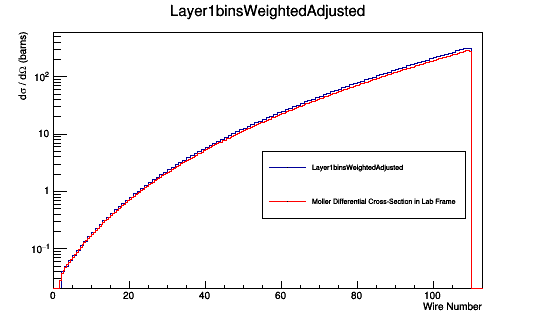VanWasshenova Thesis
Introduction
Moller Scattering
Moller Scattering Definition
Variables_Used_in_Elastic_Scattering
DV_Calculations_of_4-momentum_components
Moller Differential Cross-Section
GEANT4 Simulation of Moller Scattering
LH2 Target
Simulation Setup
NH2 Target
LH2 Vs. NH3
Effects Due to Target Material
Target Density
Atomic Mass and Electron Number Effects
Differential Cross-Section Offset
Weighted Isotropic Distribution in Lab Frame
GEMC Simulation
Drift Chamber
Determining wire-theta correspondence
CED Verification of DC Angle Theta and Wire Correspondance
DC Super Layer 1:Layer 1
Binning based on wire numbers
The bin size based on wire number will need to be a uniform width of 1, as in an increment of 1 between the integer values of the wires. This uniformity in bin size based on wire numbers is not uniform when viewed by the angle theta due to the Drift Chamber geometry discussed earlier.
Modifying evioreader
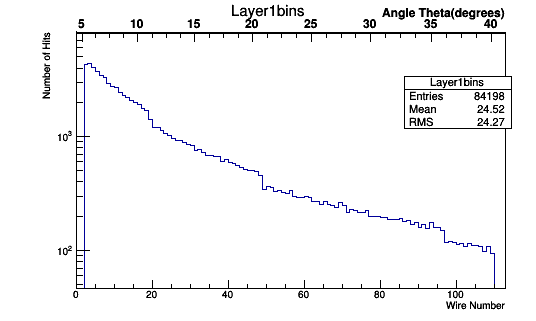
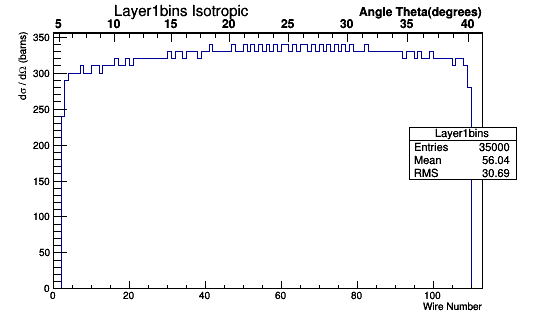
gStyle->SetStripDecimals(kTRUE);
TF1 *fit_function=new TF1("fit_function","[0]+[1]*x+[2]*x*x+[3]*x*x*x",4.49876,41.12592);
fit_function->SetParameters(4.49876,0.293001,0.000679074,-0.00000357132);
TGaxis *A1 = new TGaxis(0,5000,113,5000,"fit_function",510,"-");
A1->SetTitle("Angle Theta(degrees)");
A1->Draw();
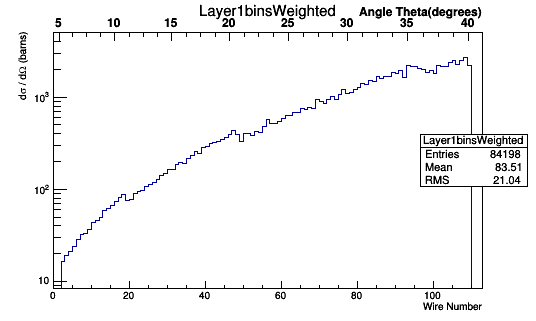
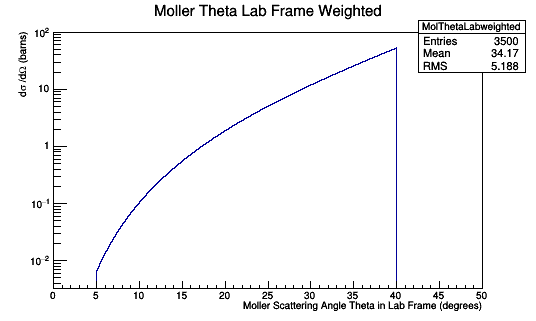
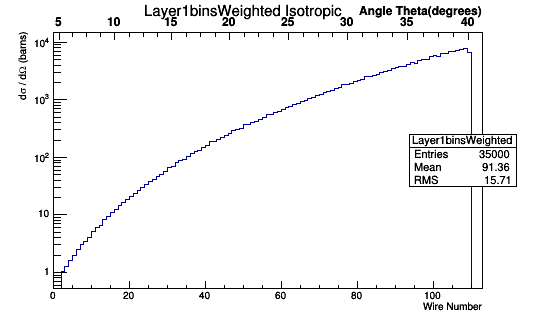
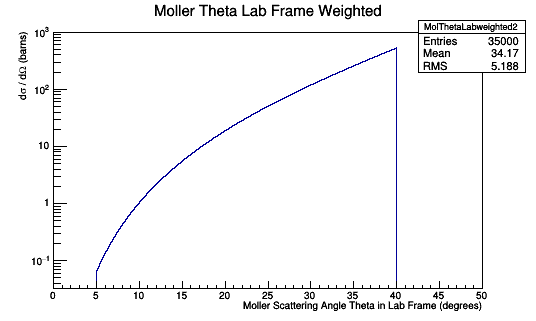
Using the expression for n in terms of Theta:
This relationship can be used to multiply each Moller Scattering angle theta in the lab frame, with it's differential cross-section weight, to find the Moller differential cross-section as a function of wire number in the lab frame.
